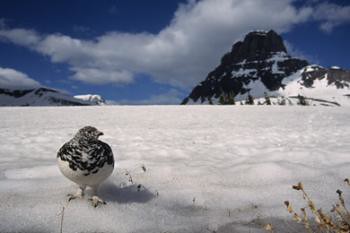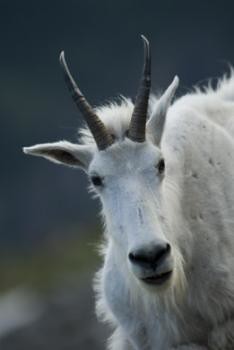What’s Causing Global Warming? In the Great Basin Pikas Provide More Clues

Pika's are "Canary in a coal mine."
©Bert Gildart: In the West there’s a land high above timber line—a land occupied by goats and sheep and ptarmigan—that is also occupied by a diminutive creature known as the pika. You may have hiked this region found in the lofty expanses of such national parks as Glacier, Mount Rainier, and Rocky Mountain and sighted this charismatic little mammal.
More than likely, however, before you saw it you heard its distinctive chirp: K-yaak, k-yaak! If so, look among the boulder fields to further confirm the pika’s presence; look for small bundles of dried grass that biologists refer to a “hay piles.”
During the winter, pika use these piles to feed on, and unlike marmots of my last posting, they don’t hibernate, rather they remain active throughout the six long months of bitter cold.
Pikas are members of the rabbit family, but have short ears and virtually no tail, and more significant to this posting, they also live in the lofty wilderness regions of Great Basin to include Ruby Mountain, Arc Dome, Alta Toquina, Table Mountain, and the East Humboldts. Archaeological evidence says pika have inhabited these specific areas for the past 40,000 years and, in the 1940s, were catalogued here by a Dr. Hall in 25 distinct populations.
Fifty years later, in the 1990s, United States Geological Survey biologists Dr. Erik Beever visited these areas and discovered that these same 25 distinct populations were down to 19. Ten years later, Beever again returned but discovered that his earlier tally of 19 was now down to 17 and that the lower edge of these 17 had now moved up vertically by an average of 130 yards.

White-Tailed Ptarmigan shares alpine home with Pika
Dr. Beever considers the pika the equivalent of the canary in a cold mine, and he told me that it is not unreasonable to predict that this tiny creature may soon disappear from the Great Basin, for the habitat on which they depend will soon be gone. He says the arctic alpine regions in which pika live will soon be replaced by subalpine fir and other types of vegetation.
Global warming is very much on my mind, as I have been commissioned to write a story on the subject for a well respected conservation magazine. As a result, I have had the privilege of visiting on phone with some very well educated scientists. These are the same types of devoted people who as a group have helped map the human genome, eradicated polio, placed men on the moon…
So when they say global warming is real and that it is caused by the build up of green house gases, they certainly deserve my respectful attention, especially with all the information they have amassed. In part, they’ve been telling me that contemporaries have examined carbon in core samplings taken from the Antarctic that span 650,000 years. From these cores they also have studied the isotopes of oxygen that span the same number of years and used them to help plot the earth’s temperatures. (The intricacies of how this is performed are a little complex—but it’s not hocus pocus, and can be explained by many a good high school science teacher.)

Mountain goat, another alpine denizen
Most significantly, scientists have then charted these substances on a graph and found that when the earth’s temperatures are highest, carbon is also highest. For me, what’s particularly compelling is that there’s a dramatic temperature spike in the chart of 650,000 years that coincides with high concentrations of carbon. The highest concentrations began with the Industrial Revolution, and that’s when the major spike is shown.
Though I have not heard other explanations for this spike, if there are additional interpretations any would care to offer, I would certainly lend a respectful ear to those voices.
Nevertheless, the evidence seems to be mounting, and now, Dr. Beever has added yet another piece of information to this complex subject.
Take this information and interpret it as you will. But if you are in one of these lofty regions inhabited by pika, also take time to enjoy the setting. Not only does the pika live here, but so do goats, sheep, marmots and the white-tailed ptarmigan.
So take a moment: sit down by one of the many quiet creeks and enjoy a snack. Then keep your eyes open and your ears tuned—and listen for the tell-tale: K-yaak, k-yaak!
If you hear it, it’s the pika exclaiming that—for the moment—all is OK in one of the West’s most spectacular regions.


October 27th, 2013 at 1:01 pm
[...] then global warming will have taken its toll not only on the glaciers of Glacier National Park, the pika of the Great Basin, the polar bear of the Arctic–but also on the Joshua Trees of this diverse [...]